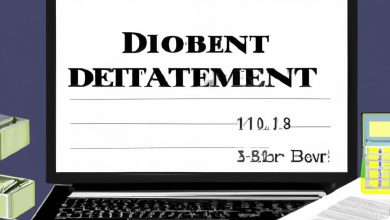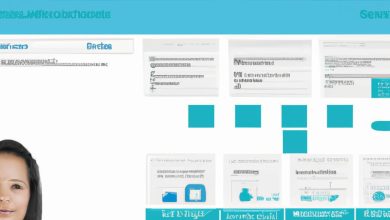Exploring the Significance of Payment Management System Login

In today’s fast-paced digital world, businesses are constantly seeking ways to streamline their operations and enhance their financial processes. One area that plays a crucial role in ensuring smooth and secure transactions is the payment management system login. But what exactly is a payment management system login, and why is it so important in the realm of financial management?
Introduction

In the bustling landscape of online transactions, a payment management system login serves as the gateway to a secure and efficient payment processing environment. Put simply, it is the mechanism through which authorized individuals gain access to a comprehensive suite of payment management tools and features.
A payment management system login acts as a digital fortress, safeguarding sensitive financial information from unauthorized access and potential threats. By requiring users to authenticate themselves, this login system ensures that only authorized personnel can access and oversee crucial financial transactions. It acts as the first line of defense, protecting businesses and their customers from fraudulent activities and data breaches.
In essence, a payment management system login is the key that unlocks a realm of financial management possibilities. It empowers businesses to exert greater control over their payment processes, gain insights into transaction histories, and maintain a high level of security while handling sensitive financial data. With the rising importance of online transactions, having a robust payment management system login becomes paramount.
In the upcoming sections, we will delve deeper into the benefits, key features, and best practices associated with a payment management system login. But first, let’s explore the significance of this vital component in today’s digital landscape. So, let’s embark on this journey together and discover how a payment management system login can revolutionize your financial operations.
Benefits of a Payment Management System Login
In the realm of financial management, a robust payment management system login brings forth a plethora of benefits that can revolutionize the way businesses handle their transactions. Let’s explore some of these advantages in detail:
Enhanced Security and Privacy Measures
With cyber threats on the rise, ensuring the security of financial data has become paramount. A payment management system login provides enhanced security measures, such as user authentication and authorization, to protect sensitive information from unauthorized access. By implementing secure password management and two-factor authentication options, businesses can fortify their payment processes and safeguard against potential breaches.
Streamlined Payment Processes
Gone are the days of manual and cumbersome payment procedures. A payment management system login streamlines the entire payment process, allowing businesses to accept payments seamlessly. By centralizing payment management, businesses can efficiently handle transactions, automate recurring payments, and even set up payment reminders for customers. This not only saves time but also improves overall customer experience.
Access to Transaction History and Reports
Having access to comprehensive transaction history and reports is crucial for businesses to make informed decisions. A payment management system login grants users the ability to view and analyze transaction data, generate detailed reports, and gain valuable insights into sales trends and customer behavior. This data-driven approach empowers businesses to optimize their financial strategies and identify areas for improvement.
Customizable User Interface
Every business has unique needs and preferences when it comes to financial management. With a payment management system login, businesses can customize the user interface to align with their branding and operational requirements. This level of flexibility allows for a seamless integration of the payment management system into existing workflows, enhancing user experience and productivity.
Integration with Other Business Systems
Efficient business operations often rely on the integration of various systems. A payment management system login can seamlessly integrate with other business systems, such as accounting software or customer relationship management (CRM) tools. This integration eliminates the need for manual data entry and ensures that all financial information is synchronized across platforms, leading to increased efficiency and accuracy.
By harnessing the power of a payment management system login, businesses can unlock these benefits and propel their financial operations to new heights. From enhanced security to streamlined processes and valuable insights, this login system paves the way for a seamless and efficient payment management experience. So, let’s continue our exploration and delve into the key features that make this login system so indispensable.
Key Features of a Payment Management System Login
When it comes to managing payments efficiently and securely, a payment management system login offers a range of essential features. Let’s explore some of the key features that make this login system indispensable for businesses:
User Authentication and Authorization
User authentication lies at the core of a payment management system login. It ensures that only authorized individuals can access the system, thereby reducing the risk of unauthorized access to sensitive financial data. By requiring unique login credentials, such as usernames and passwords, businesses can verify the identity of users before granting them access to payment management functionalities.
Secure Password Management
In an era riddled with cyber threats, secure password management is of paramount importance. A robust payment management system login provides features that enforce strong password policies, such as requiring a minimum password length and the inclusion of special characters. Additionally, it may incorporate features like password encryption and regular password expiration to enhance security measures.
Two-Factor Authentication Options
To add an extra layer of security, many payment management systems offer two-factor authentication (2FA) options. With 2FA, users are required to provide an additional verification step, such as a unique code sent to their mobile device or a biometric identifier, in addition to their login credentials. This significantly reduces the risk of unauthorized access, as even if login credentials are compromised, the second factor acts as a safeguard.
Role-Based Access Control
In businesses with multiple user roles and responsibilities, role-based access control (RBAC) becomes crucial. This feature allows administrators to assign specific permissions and access levels to different users based on their roles within the organization. By granting access only to the necessary functionalities, RBAC ensures that individuals can perform their tasks efficiently without compromising sensitive financial information.
Single Sign-On Capabilities
Managing numerous login credentials across various systems can be cumbersome and time-consuming. A payment management system login with single sign-on (SSO) capabilities simplifies this process by allowing users to access multiple systems and platforms with just one set of credentials. Not only does this save time, but it also reduces the risk of users resorting to weak passwords or forgetting their login information.
By incorporating these key features, a payment management system login provides businesses with a robust and secure environment to handle their financial transactions effectively. In the next section, we will explore the step-by-step process of creating a payment management system login. So, let’s dive in and discover how to set up this vital component.
How to Create a Payment Management System Login
Creating a payment management system login doesn’t have to be a daunting task. With the right approach and attention to detail, you can efficiently set up a robust login system that ensures the security and integrity of your financial operations. Here is a step-by-step guide to help you create a payment management system login:
Step 1: Choosing a Reliable Payment Management System Provider
The first and foremost step in creating a payment management system login is selecting a trustworthy and reputable provider. Conduct thorough research to identify providers that offer the features and security measures that align with your business requirements. Look for providers with a proven track record, positive customer reviews, and robust security protocols.
Step 2: Setting up User Accounts and Permissions
Once you have chosen a payment management system provider, it’s time to set up user accounts and define permissions. Determine who within your organization requires access to the payment management system and assign appropriate roles and permissions to each user. This ensures that only authorized personnel can access sensitive financial information and perform specific actions within the system.
Step 3: Configuring Security Settings
To maximize the security of your payment management system login, configure the appropriate security settings. Enable strong password requirements, including a minimum character length and a combination of alphanumeric and special characters. Consider implementing two-factor authentication, which adds an extra layer of security by requiring users to provide a second form of verification, such as a unique code sent to their mobile device.
Furthermore, regularly update your payment management system with the latest security patches and updates provided by the provider. This ensures that any vulnerabilities are addressed promptly, reducing the risk of unauthorized access or data breaches.
By following these steps, you can create a robust payment management system login that meets your specific business needs and ensures the utmost security and integrity of your financial transactions. Take the time to choose a reliable provider, set up user accounts and permissions correctly, and configure the necessary security settings to safeguard your payment management system effectively.
Best Practices for Managing a Payment Management System Login
Regularly updating passwords and enforcing strong password policies
One of the fundamental best practices for managing a payment management system login is to prioritize password security. Regularly updating passwords and enforcing strong password policies can significantly enhance the overall security of your payment management system. Encourage users to create unique, complex passwords that include a combination of uppercase and lowercase letters, numbers, and special characters. Implementing password expiration policies and enforcing regular password changes helps prevent unauthorized access and reduces the risk of compromised accounts.
Monitoring user activity and auditing access logs
To maintain a secure payment management system login, it is crucial to monitor user activity and regularly audit access logs. By closely monitoring user actions, you can swiftly detect any suspicious or unauthorized login attempts. Access logs provide valuable insights into user behavior, allowing you to identify potential security breaches or anomalies. Regularly reviewing and analyzing access logs ensures accountability and helps identify any security vulnerabilities that need to be addressed promptly.
Implementing regular security patches and updates
Keeping your payment management system login up to date is essential for maintaining a secure environment. Make sure to implement regular security patches and updates provided by your payment management system provider. These updates often include bug fixes and security enhancements that address potential vulnerabilities. Failing to apply these updates in a timely manner can expose your system to security risks and make it more susceptible to attacks.
Conducting employee training on secure login practices
Human error is a common cause of security breaches. Therefore, it is vital to conduct regular employee training on secure login practices. Educate your employees on the importance of using strong passwords, recognizing phishing attempts, and adhering to security protocols. By raising awareness and providing ongoing training, you can empower your employees to become the first line of defense against potential security threats.
Enabling multi-factor authentication for added security
In today’s digital landscape, relying solely on passwords for authentication is no longer sufficient. Implementing multi-factor authentication (MFA) adds an extra layer of security to your payment management system login. MFA requires users to provide additional verification factors, such as a temporary code sent to their mobile device, in addition to their password. This significantly reduces the risk of unauthorized access, as even if a password is compromised, the attacker would still need the additional verification factor to gain entry.
By following these best practices, you can ensure that your payment management system login remains secure and protected from potential security threats. Taking proactive measures and staying vigilant will help safeguard your business and customer data, instilling confidence in your payment management processes.
Conclusion
In conclusion, the payment management system login is an indispensable tool for businesses in the realm of financial management. Its significance cannot be overstated, as it serves as the gateway to a secure and streamlined payment processing environment.
By implementing a robust payment management system login, businesses can reap a multitude of benefits. Enhanced security measures ensure that sensitive financial information remains protected from unauthorized access and potential threats. Streamlined payment processes save time and effort, allowing businesses to focus on other critical aspects of their operations.
Access to transaction history and reports provides valuable insights into financial trends and patterns, enabling businesses to make informed decisions. The customizable user interface allows for a personalized experience, tailored to the specific needs and preferences of each user. Integration with other business systems further streamlines processes and increases efficiency.
To effectively manage a payment management system login, it is crucial to follow best practices. Regularly updating passwords, monitoring user activity, and implementing security patches are essential for maintaining a strong defense against potential breaches. Employee training on secure login practices and the implementation of multi-factor authentication add additional layers of security.
At erp.top5dalat.com, we understand the significance of a robust payment management system login. We offer cutting-edge solutions that empower businesses to achieve secure and efficient financial management. Take the first step towards revolutionizing your payment processes by implementing our industry-leading payment management system login.
Embrace the power of a secure and streamlined payment management system login today and experience the multitude of benefits it brings to your business. Trust erp.top5dalat.com to provide you with the tools and expertise you need to thrive in the digital landscape.
Conclusion: So above is the Exploring the Significance of Payment Management System Login article. Hopefully with this article you can help you in life, always follow and read our good articles on the website: erp.top5dalat.com





